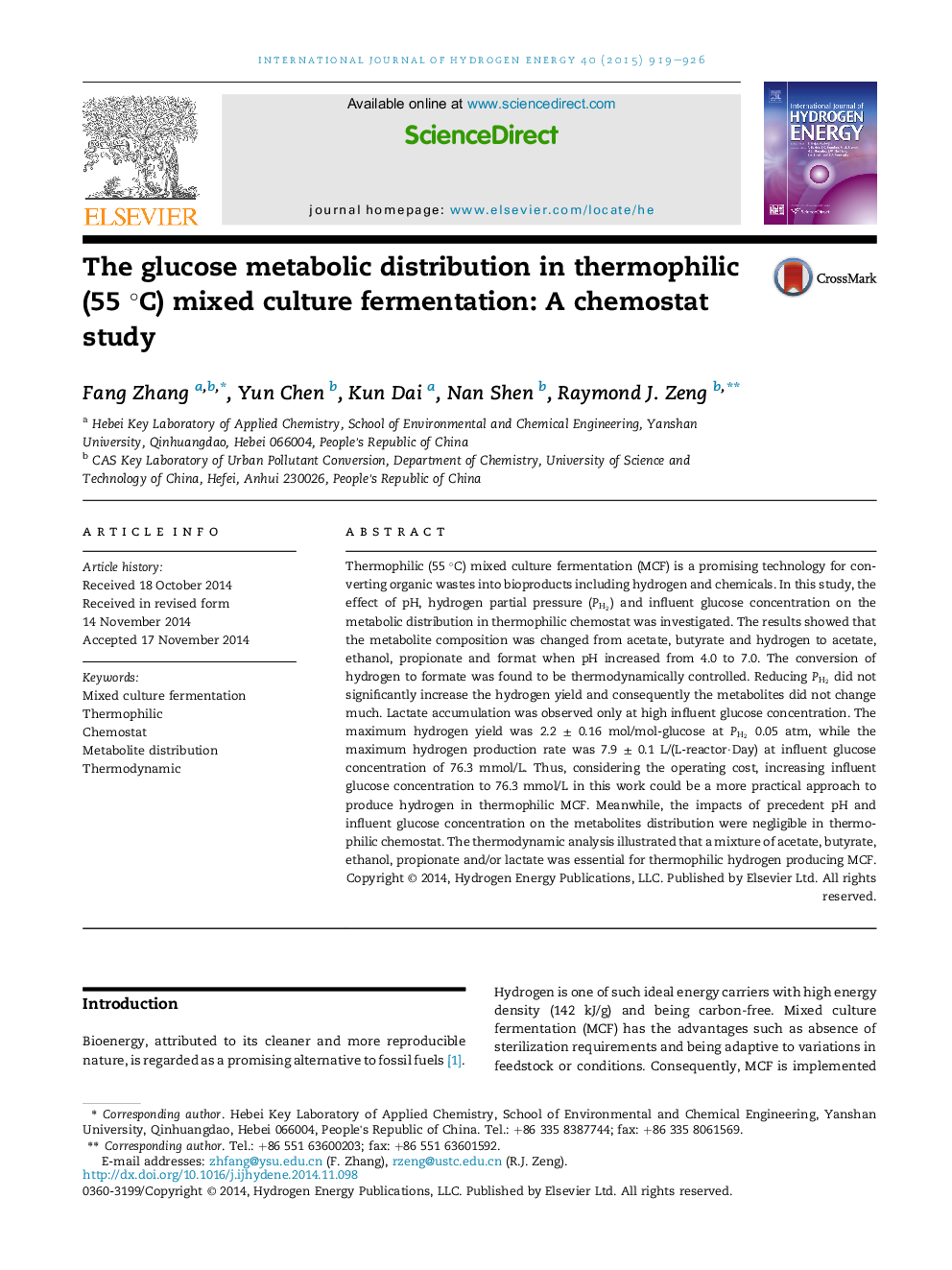| Article ID | Journal | Published Year | Pages | File Type |
|---|---|---|---|---|
| 1270188 | International Journal of Hydrogen Energy | 2015 | 8 Pages |
•Effects of pH, PH2PH2 and glucose concentration were studied in thermophilic MCF.•Conversion of H2 to formate was found to be thermodynamically controlled.•The impacts of precedent pH and glucose concentration were negligible in MCF.•Increasing glucose concentration is a more practical approach to produce H2.•A mixture of VFAs was essential by thermodynamic analysis in H2 producing MCF.
Thermophilic (55 °C) mixed culture fermentation (MCF) is a promising technology for converting organic wastes into bioproducts including hydrogen and chemicals. In this study, the effect of pH, hydrogen partial pressure (PH2PH2) and influent glucose concentration on the metabolic distribution in thermophilic chemostat was investigated. The results showed that the metabolite composition was changed from acetate, butyrate and hydrogen to acetate, ethanol, propionate and format when pH increased from 4.0 to 7.0. The conversion of hydrogen to formate was found to be thermodynamically controlled. Reducing PH2PH2 did not significantly increase the hydrogen yield and consequently the metabolites did not change much. Lactate accumulation was observed only at high influent glucose concentration. The maximum hydrogen yield was 2.2 ± 0.16 mol/mol-glucose at PH2PH2 0.05 atm, while the maximum hydrogen production rate was 7.9 ± 0.1 L/(L-reactor·Day) at influent glucose concentration of 76.3 mmol/L. Thus, considering the operating cost, increasing influent glucose concentration to 76.3 mmol/L in this work could be a more practical approach to produce hydrogen in thermophilic MCF. Meanwhile, the impacts of precedent pH and influent glucose concentration on the metabolites distribution were negligible in thermophilic chemostat. The thermodynamic analysis illustrated that a mixture of acetate, butyrate, ethanol, propionate and/or lactate was essential for thermophilic hydrogen producing MCF.
Graphical abstractFigure optionsDownload full-size imageDownload as PowerPoint slide
